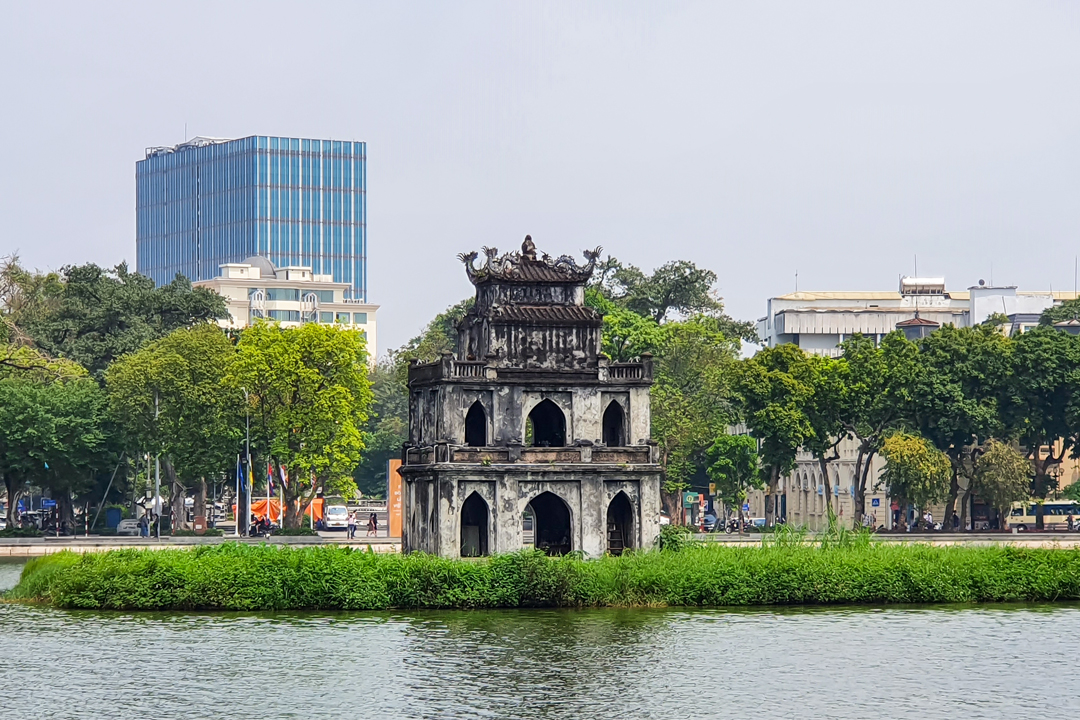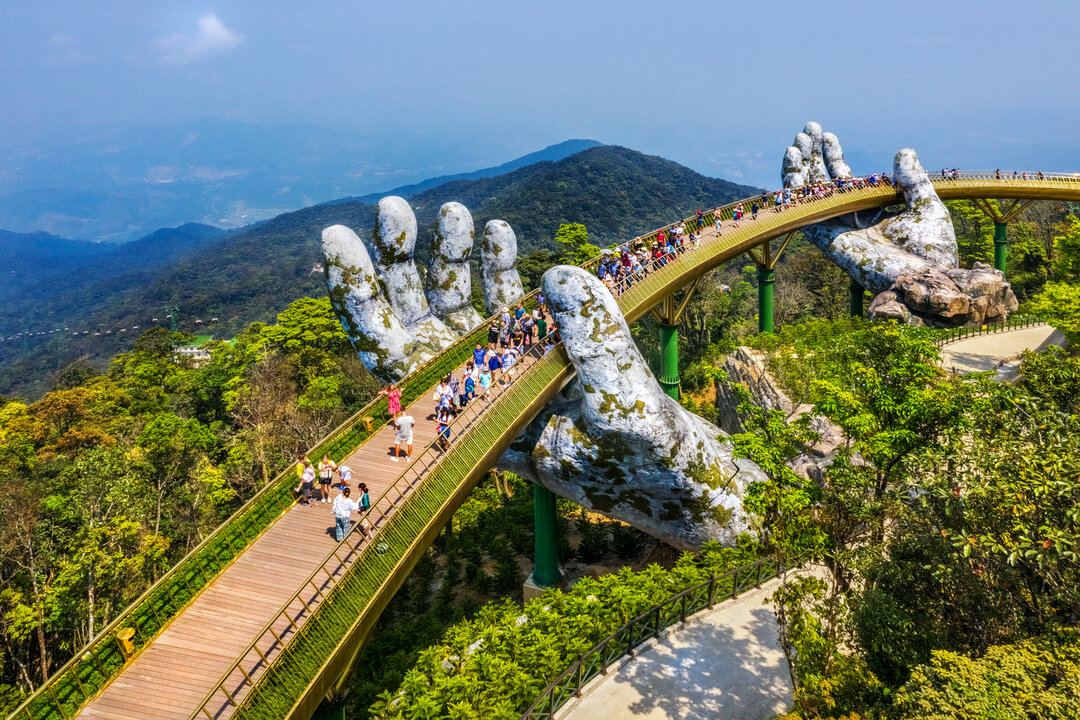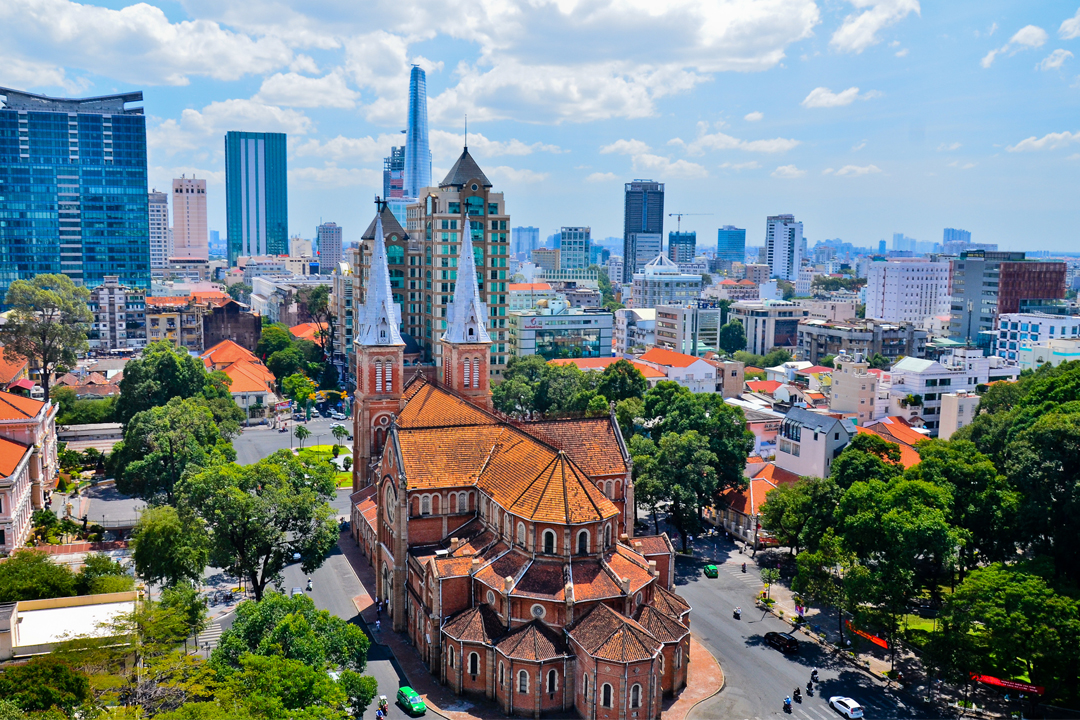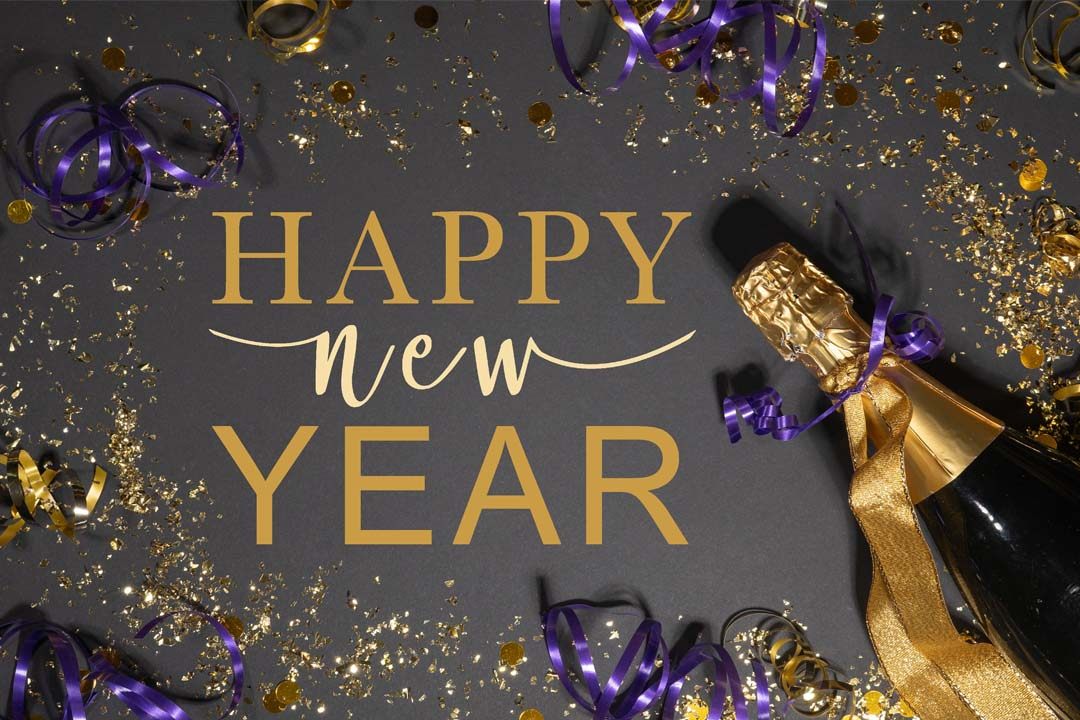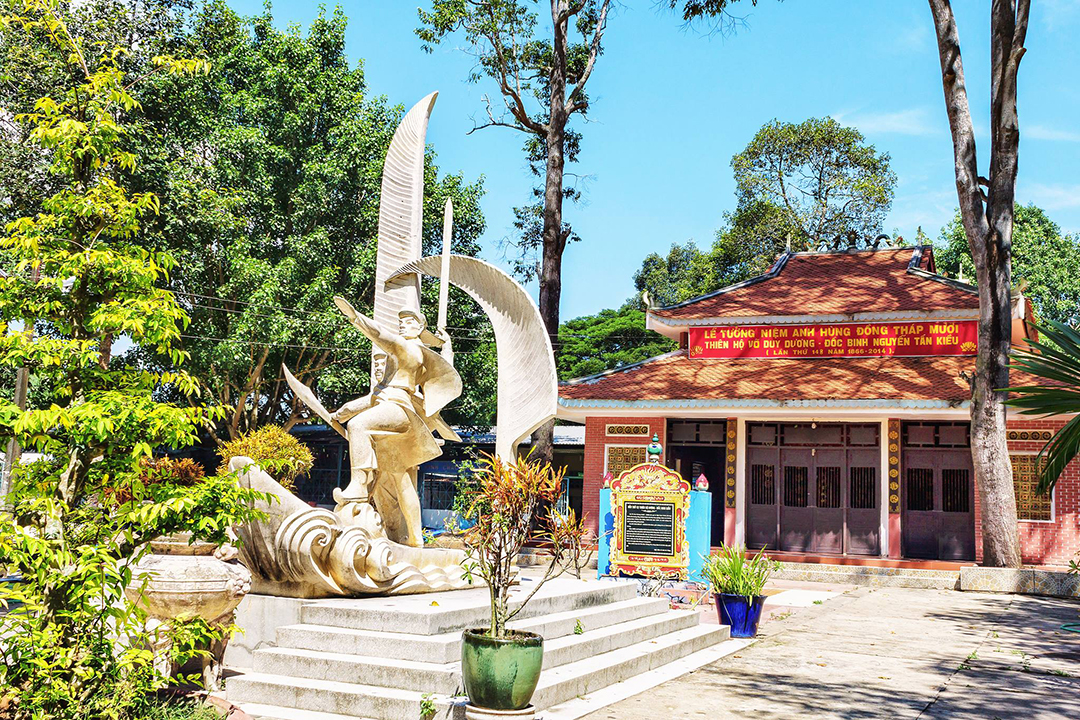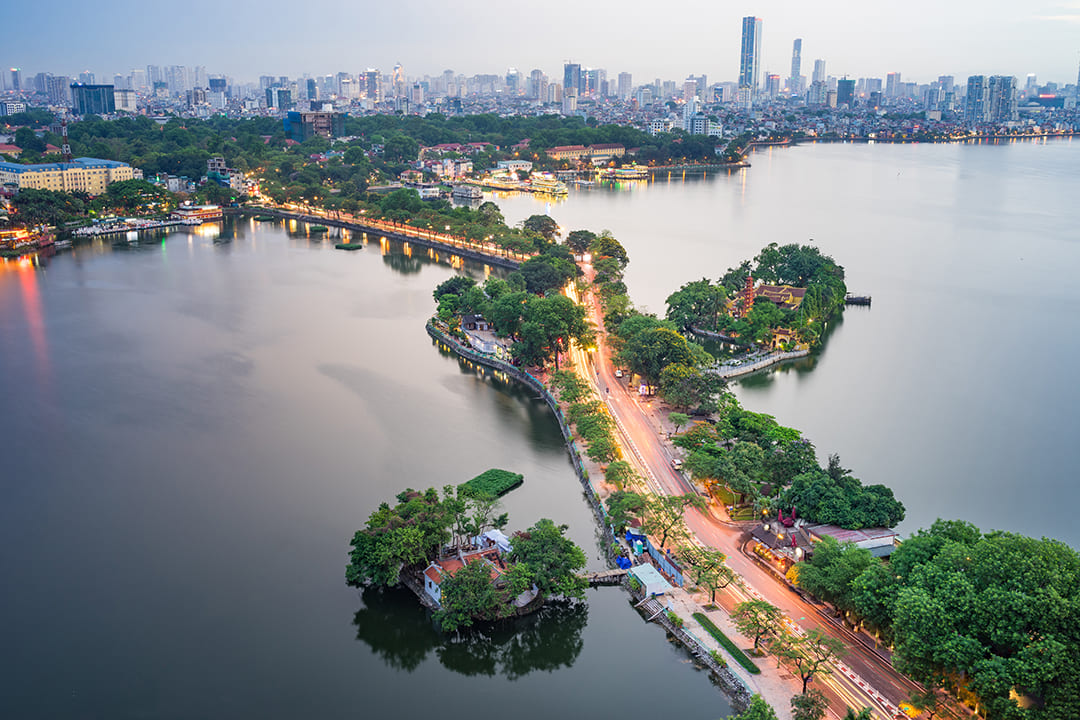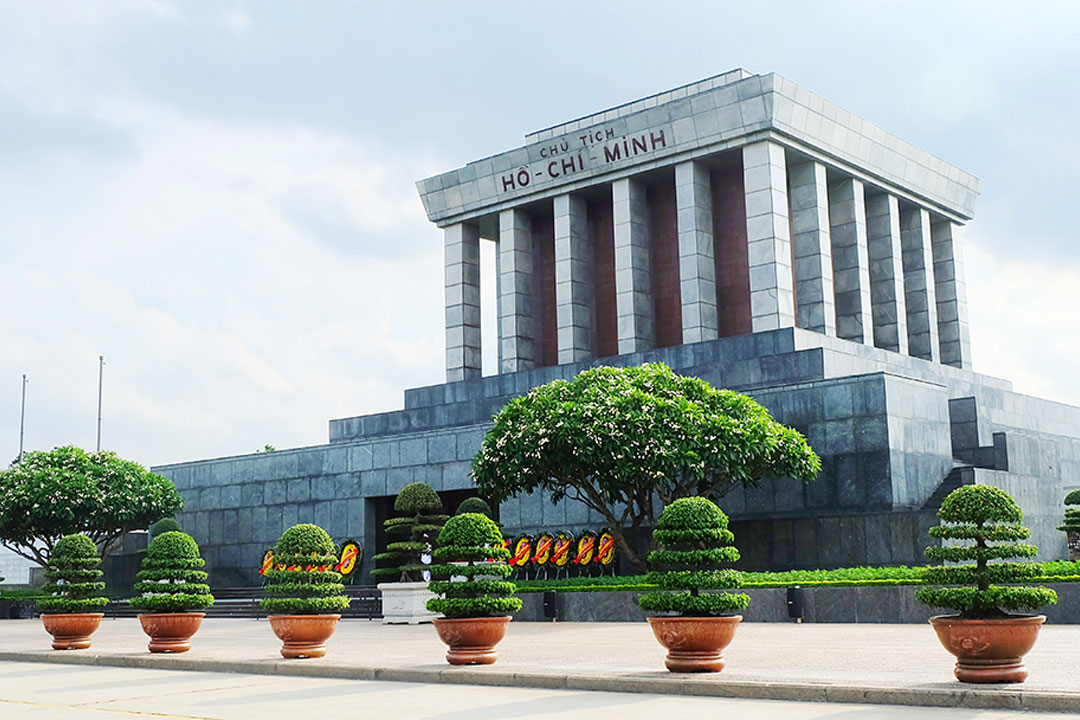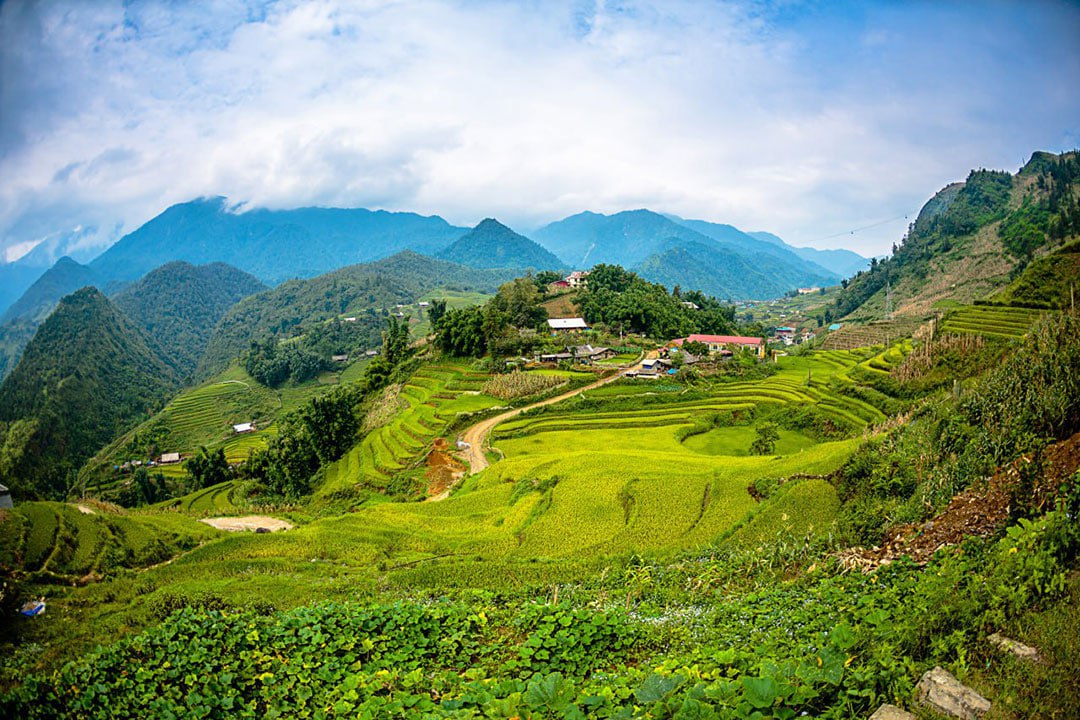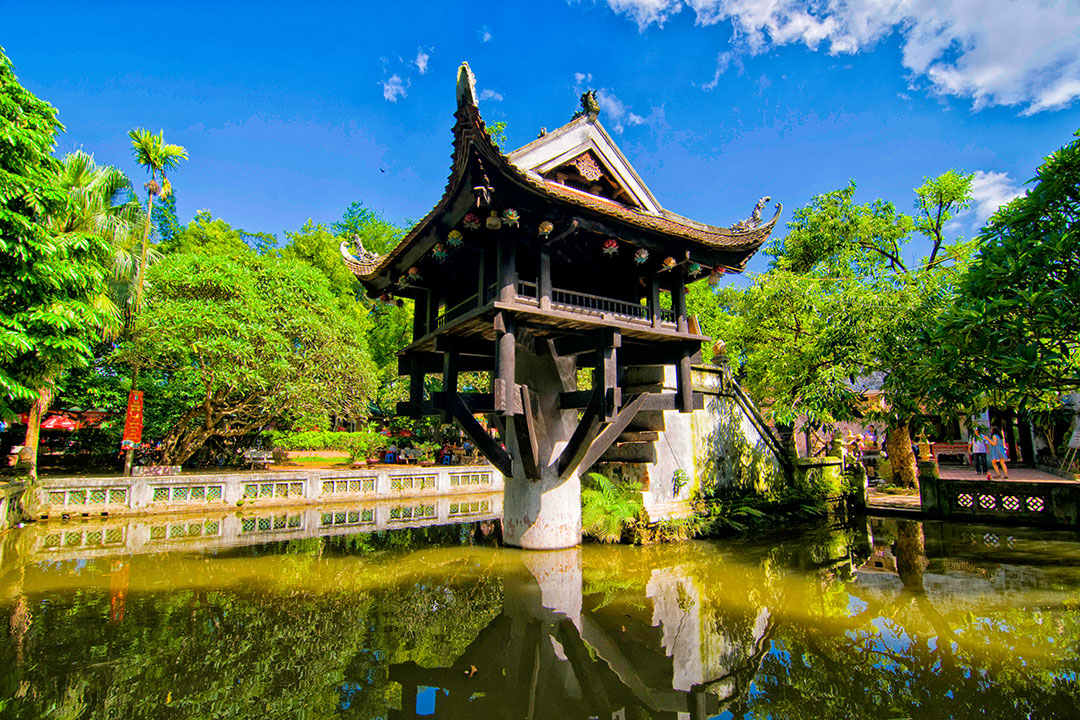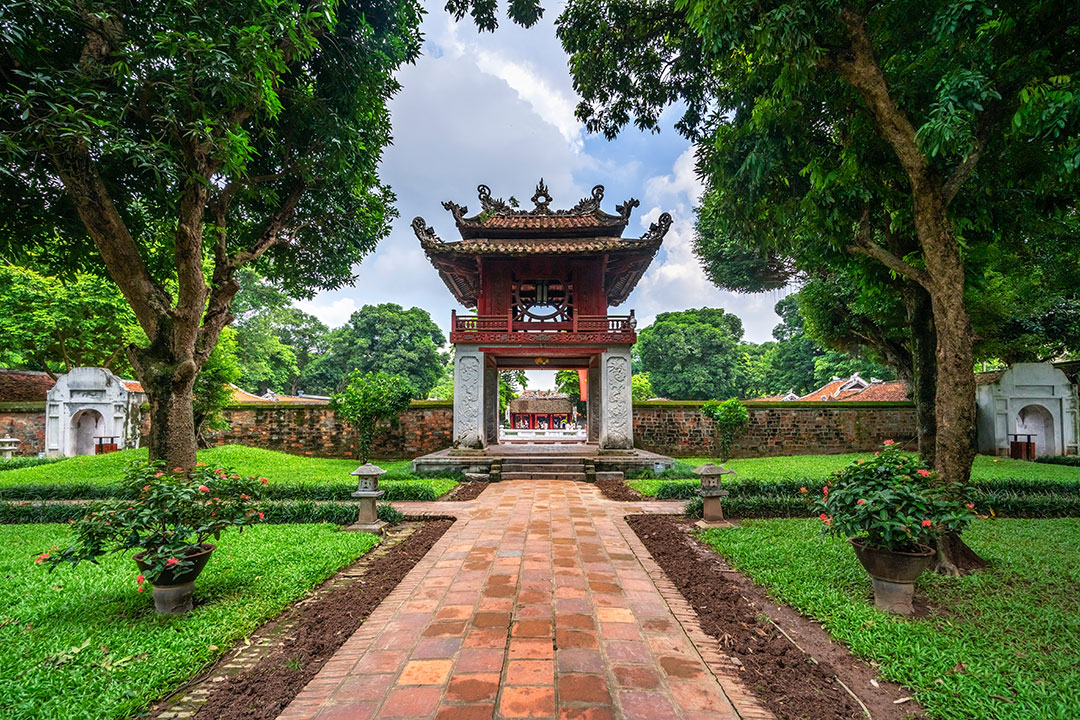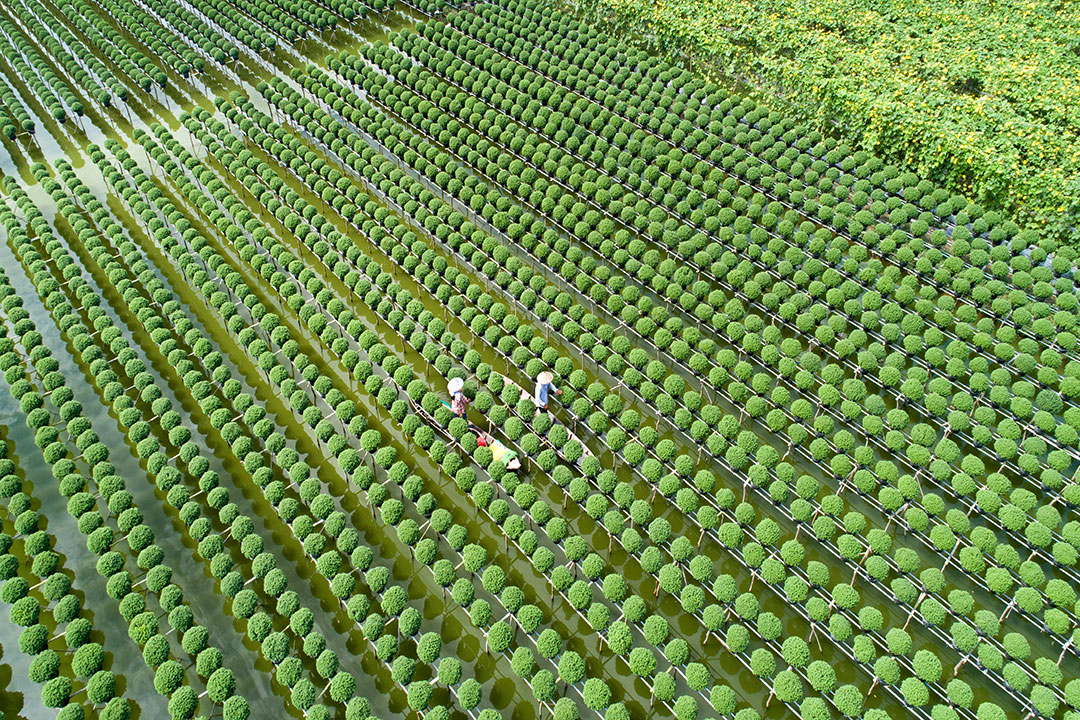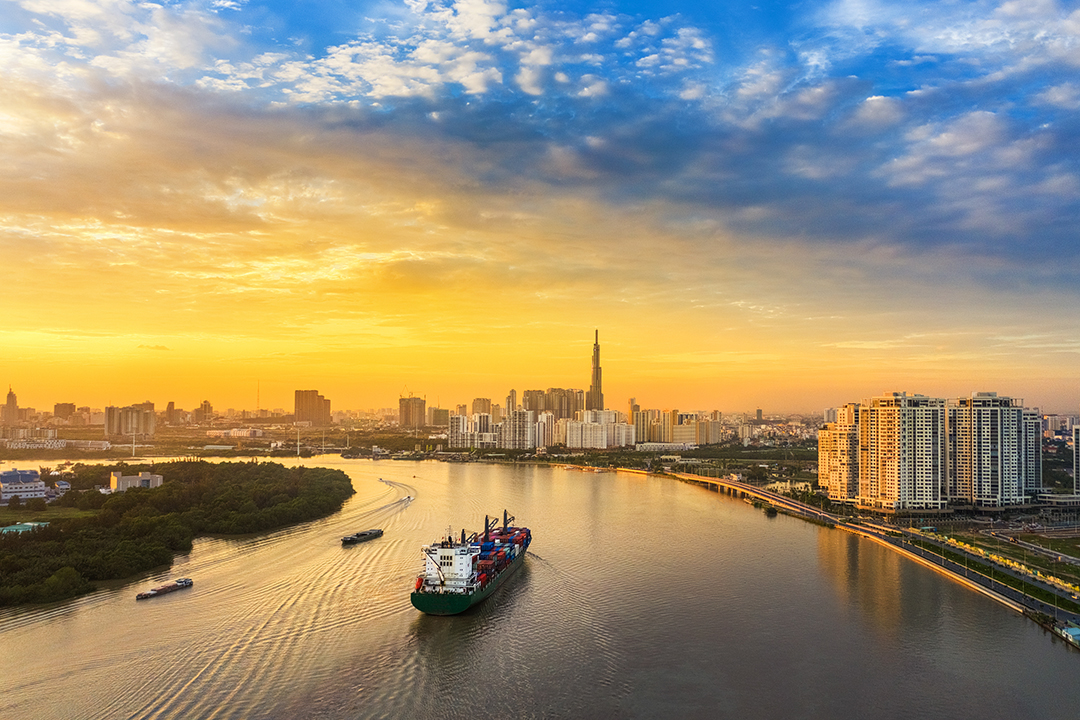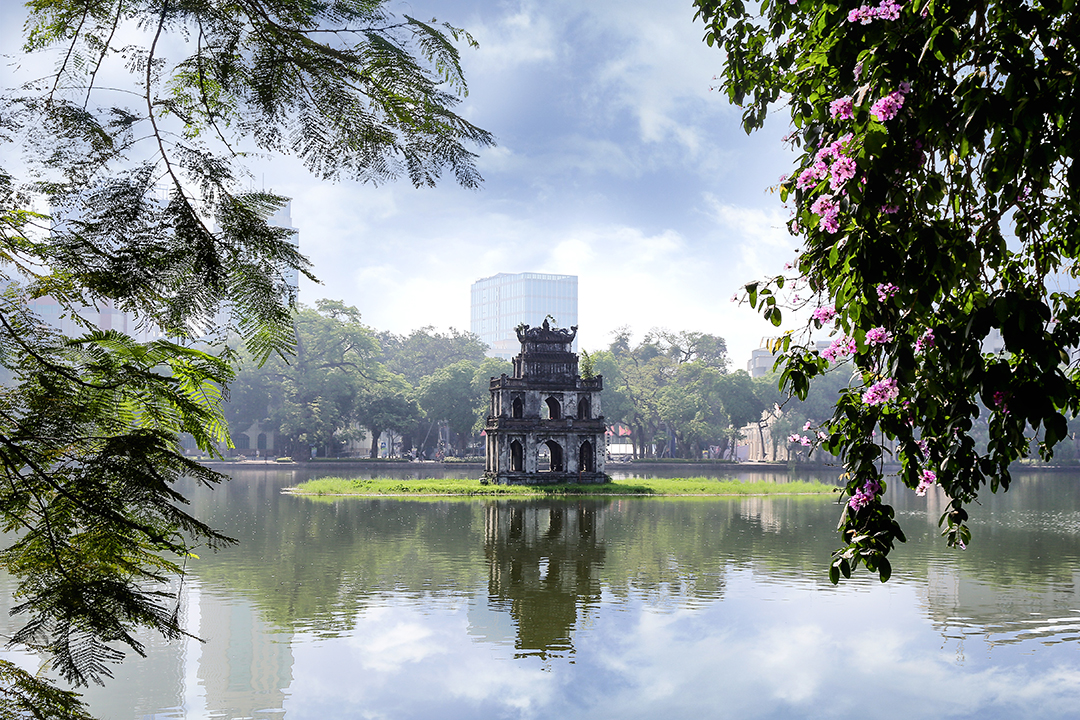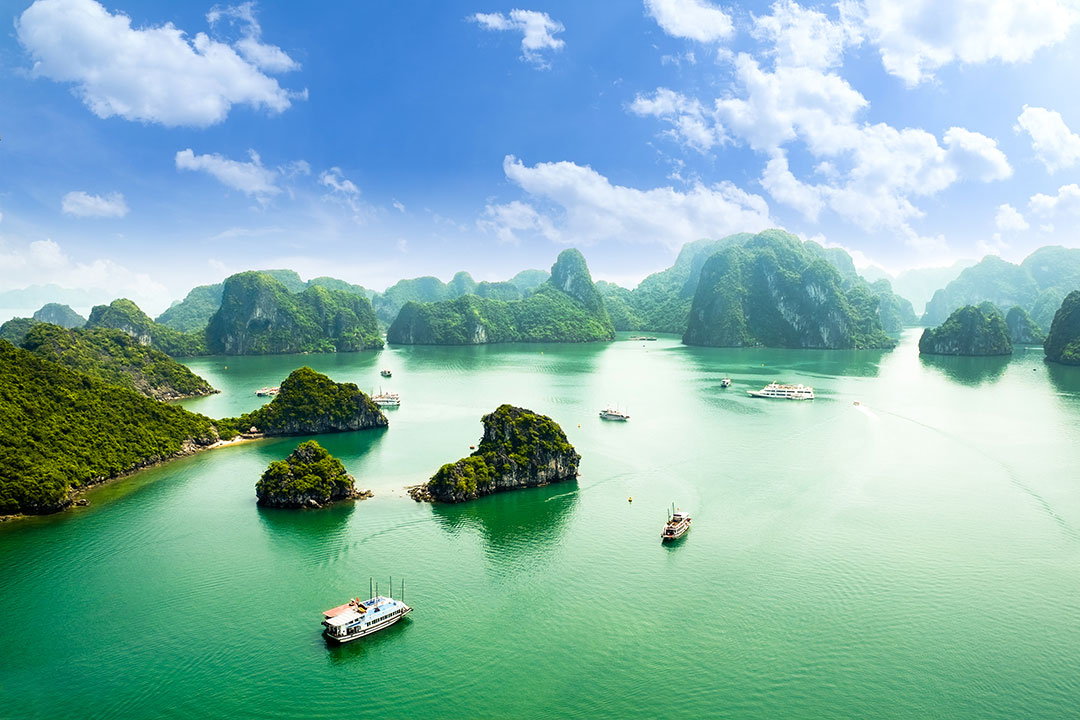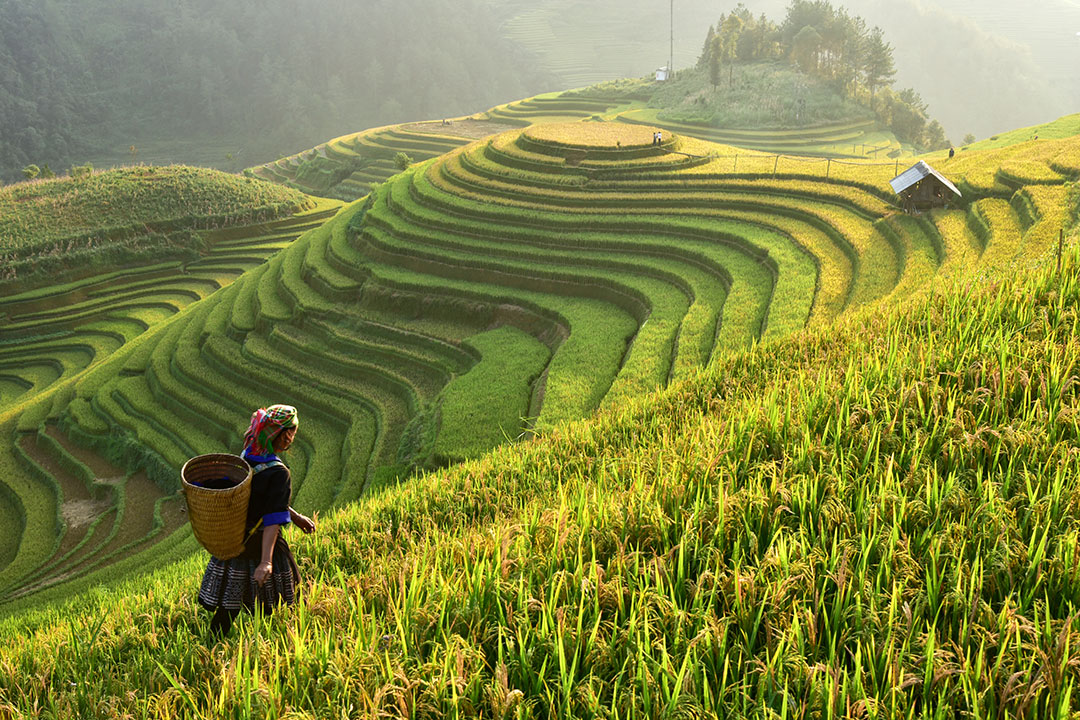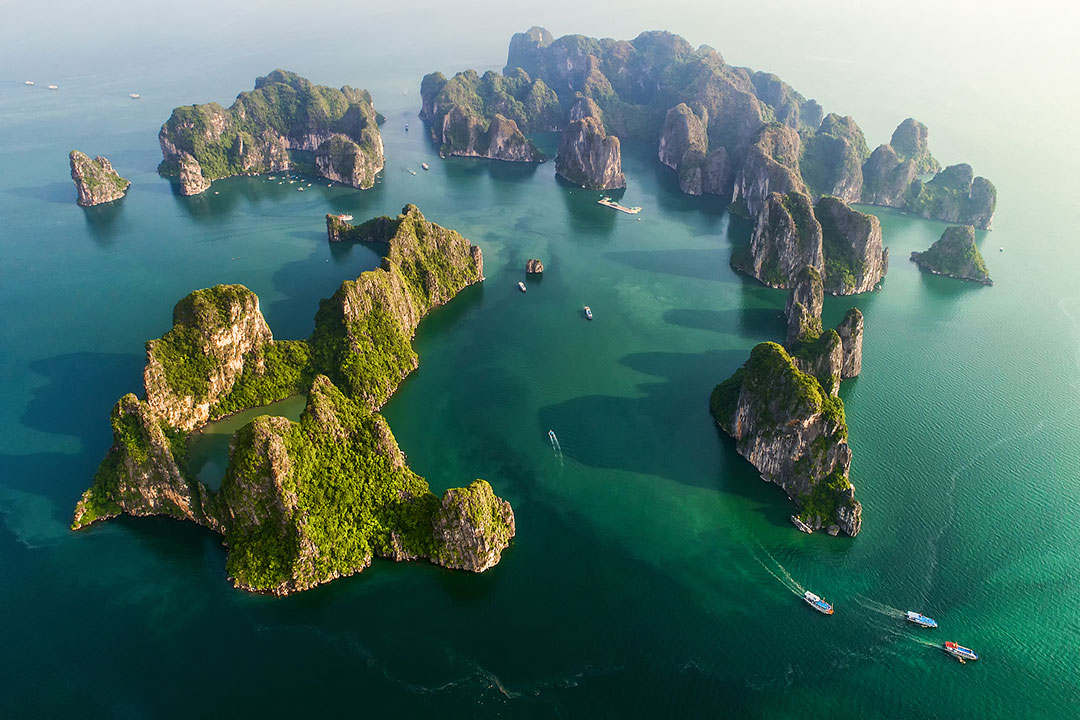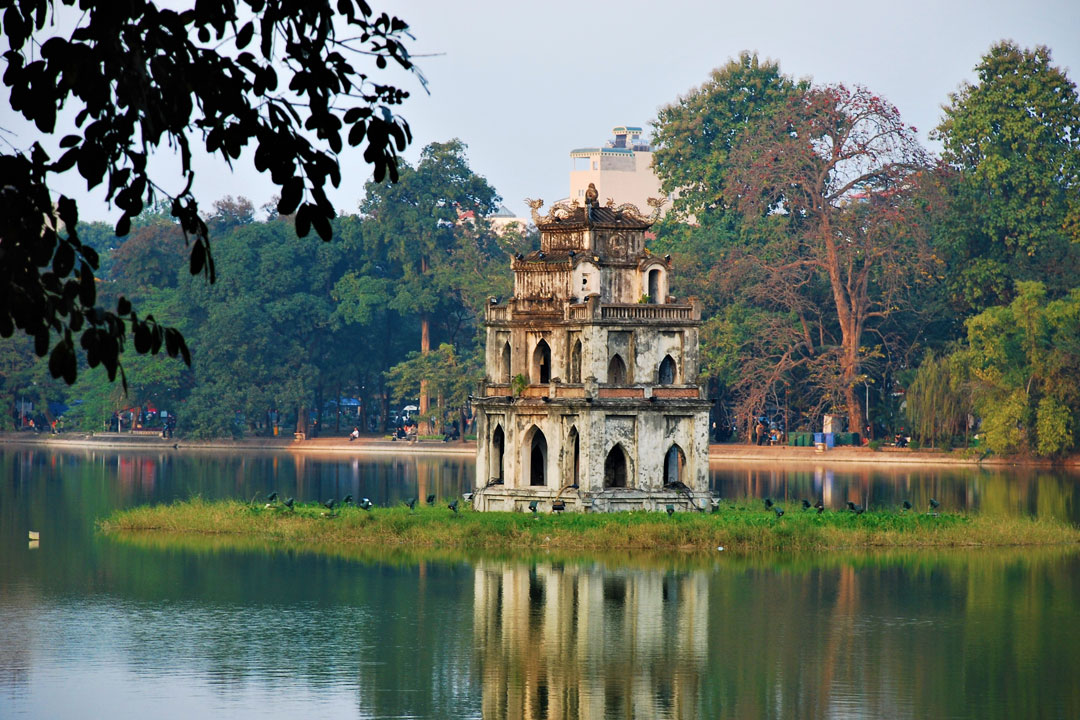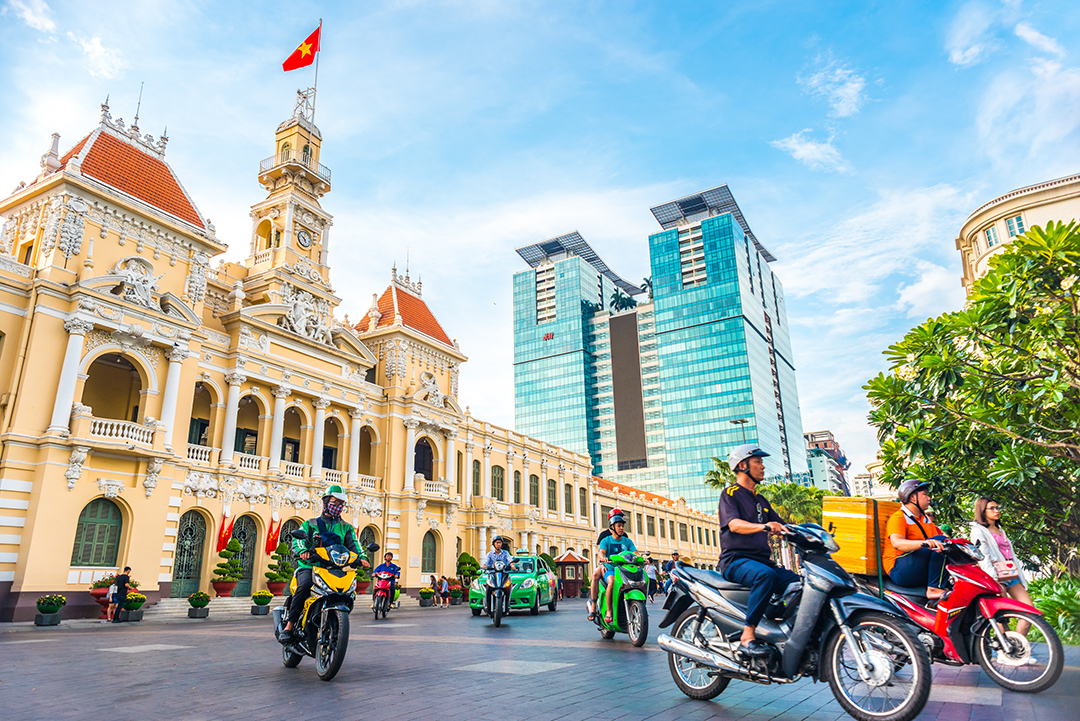West Lake in Hanoi: Overview, History, Culture, Things To Do & Travel Guide
Discover the enchanting allure of West Lake in Hanoi, a fascinating gem that captures the soul of Vietnam's vibrant capital. As the city's largest freshwater lake, it offers more than just panoramic views. It presents a tapestry woven with history, culture, and leisure. Wander along its picturesque shores to experience an invigorating blend of ancient temples standing beside modern cafes and bustling streets meeting serene landscapes. For both locals and travelers alike, West Lake serves as an escape from urban clamor while still residing within the heart of Hanoi. Join us at GTrip as we delve into why this iconic landmark is an essential stop on any itinerary.
Overview of the West Lake in Hanoi
West Lake (Ho Tay) is the largest freshwater lake in Hanoi, Vietnam. It is located in the northwest part of the city, relatively close to the city center. Most of the lake lies within the former Tay Ho District, which is named after the lake itself. The area is well-known for its scenic beauty, historical sites, and vibrant local culture.
The lake covers an area of about 500 hectares (5.3 km²) with a shoreline stretching approximately 17 kilometers. West Lake is easily accessible from other major landmarks in Hanoi, such as Hoan Kiem Lake (about 2.5 km away) and the Ho Chi Minh Mausoleum (about 1 km from the southern edge of the lake)
Local flora and fauna around West Lake
West Lake's shoreline bursts with botanical diversity that enhances its natural charm throughout the year. Majestic lotus flowers emerge from the water during summer months, creating a pink and white tapestry that has inspired Vietnamese poets and artists for centuries. The sight of lotus blossoms opening at dawn against the backdrop of the misty lake surface offers one of Hanoi's most photogenic natural displays.
The lake's periphery is graced by ancient willow trees whose trailing branches sway gently in the breeze, creating dappled shadows along walking paths. Venerable banyan trees with their elaborate root systems provide shade to tourists and locals who gather beneath them during hot days. These trees contribute to the aesthetic appeal and also serve as important ecological anchors for the lake ecosystem.
Bird enthusiasts will delight in the diverse avian population that calls West Lake home or visits seasonally. Elegant white herons can often be spotted wading in the shallower areas, their slender forms creating striking silhouettes against the water. Vibrant kingfishers dart across the lake's surface, while various species of ducks and geese find sanctuary in the lake's quieter corners throughout the year.
Aquatic life in West Lake
The murky depths of West Lake harbor a surprising variety of fish species that have adapted to its freshwater environment. Carp dominate the underwater population, with their distinctive shapes occasionally visible when they surface to feed. These hardy fish have thrived in the lake for generations and hold cultural significance in Vietnamese folklore and traditions.
Catfish are another prominent resident, with some specimens growing to impressive sizes in the nutrient-rich waters. Local fishermen can sometimes be observed casting their nets or lines in pursuit of these whiskered creatures. The lake's ecosystem supports healthy populations of tilapia as well, a non-native species that has successfully established itself in many Vietnamese waterways.
West Lake offers unexpected wildlife encounters for patient observers. Sharp-eyed tourists might spot the occasional turtle surfacing briefly before disappearing beneath the water again. These elusive reptiles represent living connections to local legends that speak of magical turtles in Hanoi's lakes.
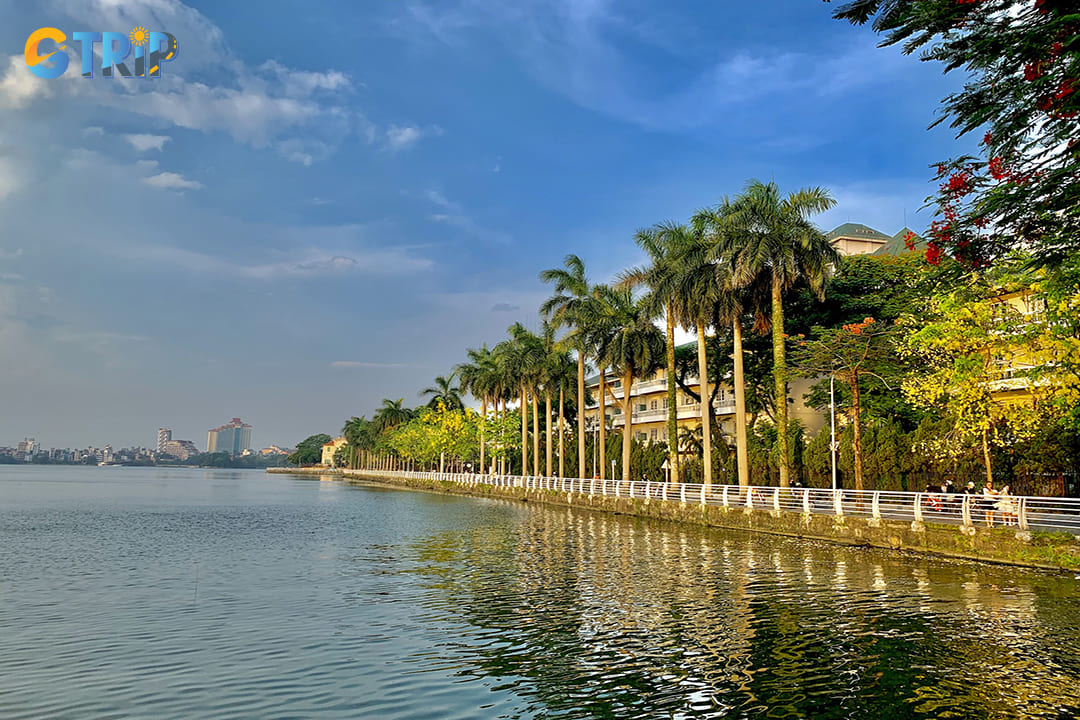
West Lake, locally known as Ho Tay, stands as Hanoi's crown jewel of natural beauty
The historical and cultural significance of West Lake
West Lake, known locally as Ho Tay, holds a special place in the heart and history of Hanoi. Once part of the mighty Red River, geological changes over centuries transformed it into the distinct lake we see today. This natural evolution created what would become one of Vietnam's most culturally significant bodies of water.
During the Ly and Tran dynasties (11th-14th centuries), West Lake served as an exclusive royal recreational ground. Vietnamese emperors built palaces along their shores, using the tranquil waters for leisure activities and ceremonial purposes. The imperial connection established West Lake's reputation as a place of elegance and cultural importance that continues today.
Local folklore offers fascinating explanations for the lake's origins. The most popular legend tells of a giant golden buffalo that angrily stamped the ground, creating a depression that filled with water. This mythical explanation connects the lake to Vietnam's agricultural heritage and spiritual beliefs about the land.
Another colorful origin story describes an epic battle between the Dragon King and a crafty nine-tailed fox. The fox's defeat and subsequent transformation created the depression that became West Lake. These legends reflect the Vietnamese tradition of explaining natural features through mythological narratives.
West Lake is surrounded by historically significant religious sites that showcase Hanoi's spiritual heritage:
- Tran Quoc Pagoda: Hanoi's oldest Buddhist temple, dating back to the 6th century
- Quan Thanh Temple: A Taoist temple built during the Ly Dynasty (1010-1225)
- Kim Lien Pagoda: Associated with the legend of the golden buffalo
- Tay Ho Temple: A temple dedicated to the Mother Goddess worship tradition
The lake serves as a focal point for numerous traditional festivals and spiritual activities throughout the year. Celebrations often feature colorful processions, rituals at lakeside temples, and special food offerings. These events create opportunities for cultural preservation and community gathering.
Today, West Lake represents a living connection to Hanoi's past while evolving into a modern meeting place. Both locals and expatriates gather along its shores, creating a unique cultural dynamic. This blend of historical significance and contemporary life makes West Lake more than just a scenic location, it's a symbol of Hanoi's enduring cultural identity.
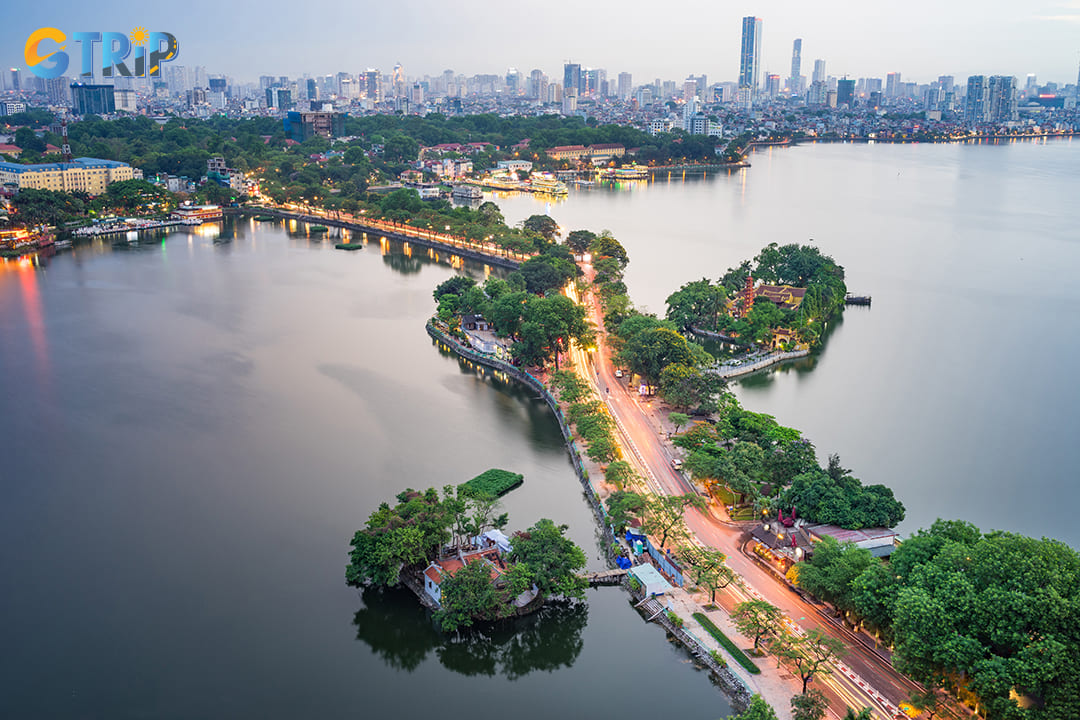
West Lake, known locally as Ho Tay, holds a special place in the heart and history of Hanoi
8 things to do at West Lake
West Lake offers tourists an impressive array of activities, from serene outdoor adventures to cultural immersions and culinary delights. The expansive water body and surrounding areas provide perfect settings for both active pursuits and peaceful relaxation.
1. Cycling and jogging around the West Lake
The 17-kilometer paved pathway encircling West Lake stands as one of Hanoi's premier routes for fitness enthusiasts and casual explorers alike. This well-maintained track provides a smooth surface for cyclists and joggers while offering uninterrupted views of the tranquil waters throughout the journey.
Early mornings at West Lake present a particularly magical atmosphere as locals practice tai chi, fishermen cast their nets, and the lake mist creates a dreamlike setting. Tourists without their own bikes can rent from shops on Thuy Khue and Tay Ho Streets. Standard bikes cost 20,000-40,000 VND per hour, while mountain bikes range from 50,000-100,000 VND.
The most scenic sections include the northeastern shore near Tran Quoc Pagoda and the northwestern area where lotus ponds bloom magnificently during the summer months. You should consider stopping at one of the many lakeside cafes along the route to rehydrate and take in the views.
2. Boating and pedal boat rentals for water activities
Exploring West Lake from the water offers a completely different perspective of Hanoi's largest freshwater body. You can choose from various watercraft options depending on your preferences and sense of adventure.
Boat rental options at West Lake:
| Activity type | Price range (VND) | Duration | Best time | Location |
|---|---|---|---|---|
| Pedal boats | 30,000-50,000 | Per hour | Morning/Late afternoon | Multiple rental points |
| Swan-shaped boats | 50,000-70,000 | Per hour | Morning/Late afternoon | Northern shore |
| SUP (weekdays) | 150,000 | Half-day | Morning | Near Tay Ho District |
| SUP (weekends) | 200,000 | Half-day | Early morning | Near Tay Ho District |
| Kayaks | 100,000 | Per hour | Morning | Northern shore |
For the most enjoyable experience, consider renting boats during weekday mornings when the lake is less crowded. Most rental facilities operate from early morning until evening, with extended hours during summer (5:00 AM to 9:00 PM) and slightly shorter hours in winter (8:00 AM to 9:00 PM). Novice paddleboarders can also find instructors at several rental locations who provide basic training for an additional fee of approximately 50,000-100,000 VND per session.
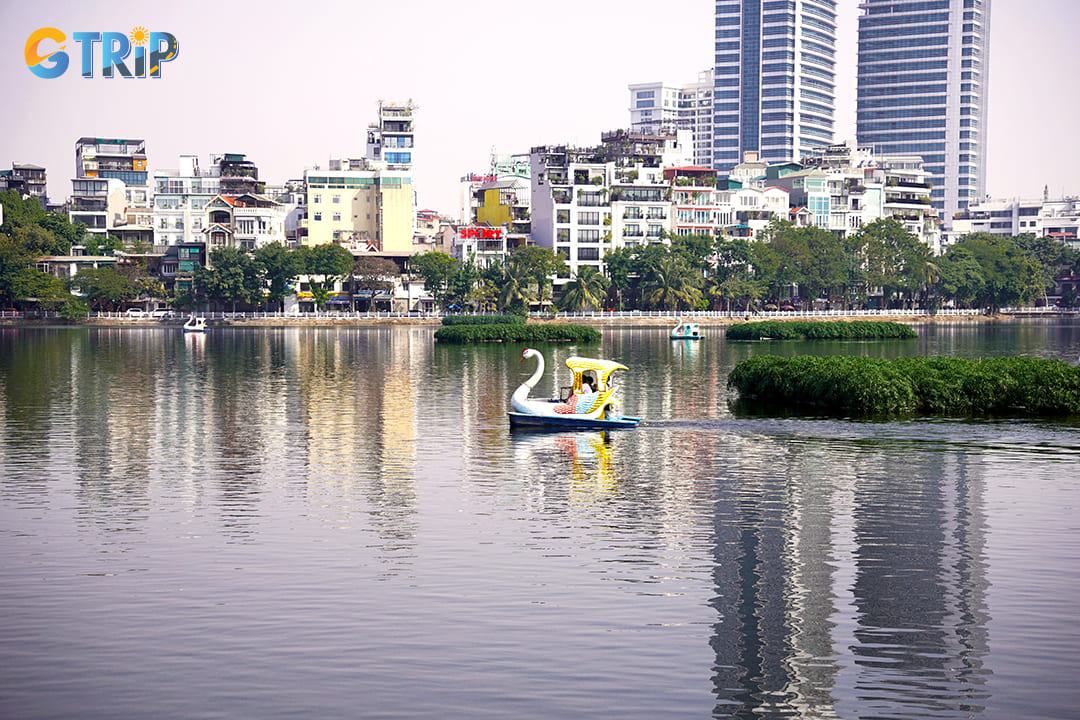
For the most enjoyable experience, consider renting boats during weekday mornings when the lake is less crowded
3. Sunset and sunrise viewing from strategic locations
West Lake's vast expanse creates perfect conditions for witnessing spectacular displays of color as the sun greets and bids farewell to Hanoi each day. The lake's position and size offer multiple vantage points for capturing these magical moments. Prime viewing locations for sunrise and sunset at West Lake:
- Sunrise spots:
- Eastern shore near Tran Quoc Pagoda (best during winter months)
- Thanh Nien Road, where West Lake meets Truc Bach Lake
- Cafe balconies along Trich Sai Street facing east
- The small peninsula near Bo De Pagoda
- Sunset spots:
- Western banks along Lac Long Quan Street
- Rooftop cafes in the Quang An area
- The Red River viewing platform on the northeast shore
- Waterfront restaurants on Xuan Dieu Street
During summer months (May-August), sunrise typically occurs between 5:00-5:30 AM, while winter sunrise (November-February) happens later, around 6:00-6:30 AM. For photographers, arriving 30 minutes before the actual sunrise or sunset yields the best lighting conditions for capturing the lake's changing colors.
4. Take pictures at scenic spots and lotus ponds
West Lake presents a photographer's paradise with its diverse landscapes, cultural landmarks, and changing seasonal beauty. Both amateur and professional photographers will find endless compositions throughout the year.
The ancient Tran Quoc Pagoda creates striking silhouettes against the colorful sky during golden hour, especially when photographed from Thanh Nien Road. For optimal lighting, visit between 5:30-7:00 AM or 5:00-6:30 PM, depending on the season. The pagoda's 11-story tower and red architecture provide strong focal points against the watery backdrop.
During summer months, the lotus ponds in the northwestern part of the lake become vibrant canvases of pink and green. The best viewing occurs in June and July when flowers reach peak bloom. For close-up flower photography, consider hiring a small boat (around 100,000 VND) to navigate directly among the lotus fields.
Top photography spots around West Lake:
- Dragon statues on the northern shore (best photographed at morning golden hour)
- AMI Coffee Garden's treehouse cafe with elevated lake perspectives
- Quang Ba Flower Market (particularly vibrant before dawn)
- The floating islands near Thu Le Park
- Sunset reflections from the western and southern shores, where fewer buildings obstruct the horizon
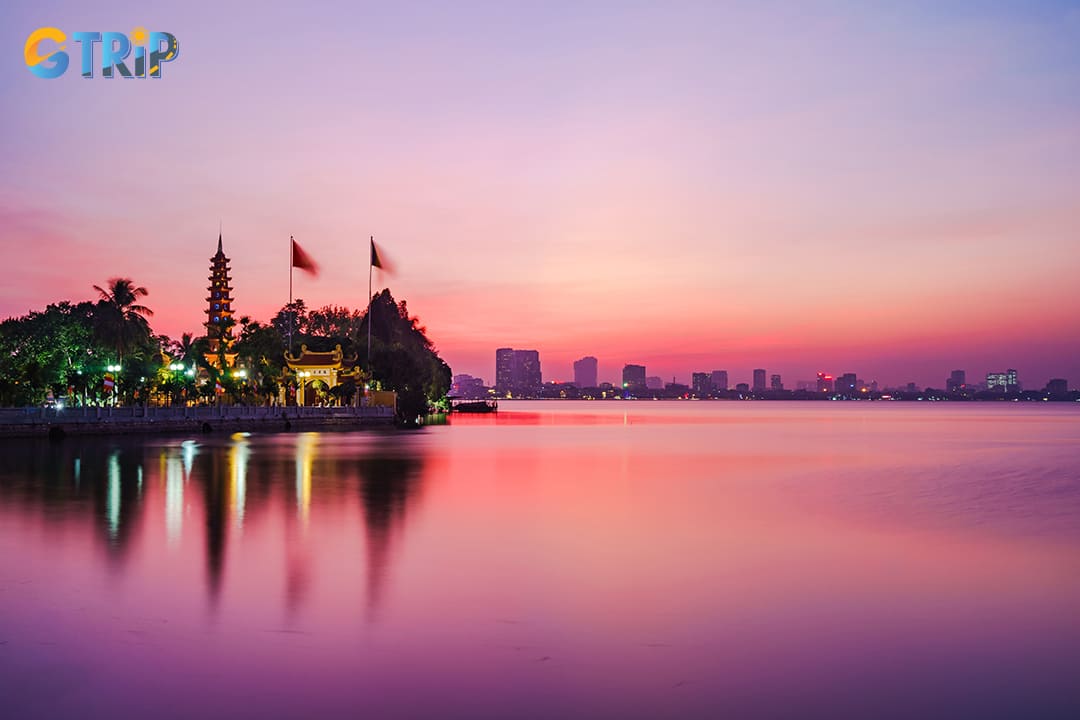
West Lake presents a photographer's paradise with its diverse landscapes, cultural landmarks, and changing seasonal beauty
5. Visiting historic pagodas and temples
West Lake serves as the spiritual heart of Hanoi, housing some of Vietnam's most significant religious landmarks. Tran Quoc Pagoda, Vietnam's oldest Buddhist temple, dating back over 1,500 years, stands magnificently on a small peninsula extending into the eastern part of West Lake. Its 11-story red brick pagoda has become an iconic symbol of Hanoi. Tourists should note the ancient bodhi tree, grown from a cutting of the original tree under which Buddha achieved enlightenment, gifted by President Rajendra Prasad of India in 1959.
Quan Thanh Temple, located at the southeastern corner where West Lake meets Truc Bach Lake. It presents a striking example of Taoist architecture dedicated to Tran Vu, the God of the North. The temple houses a remarkable 4-ton, 3.96-meter black bronze statue of Tran Vu created in 1677 during the Le Dynasty. You should look for the intricate details on the four sacred animals adorning the temple's corners.
Tay Ho Temple (also called Phu Tay Ho) draws thousands of worshippers, particularly on the first and fifteenth days of each lunar month. Dedicated to the Mother Goddess Lieu Hanh, this temple demonstrates the blend of Buddhist and indigenous Vietnamese beliefs. The most auspicious visiting times align with Vietnamese festivals, especially during the temple's main festival held in early spring.
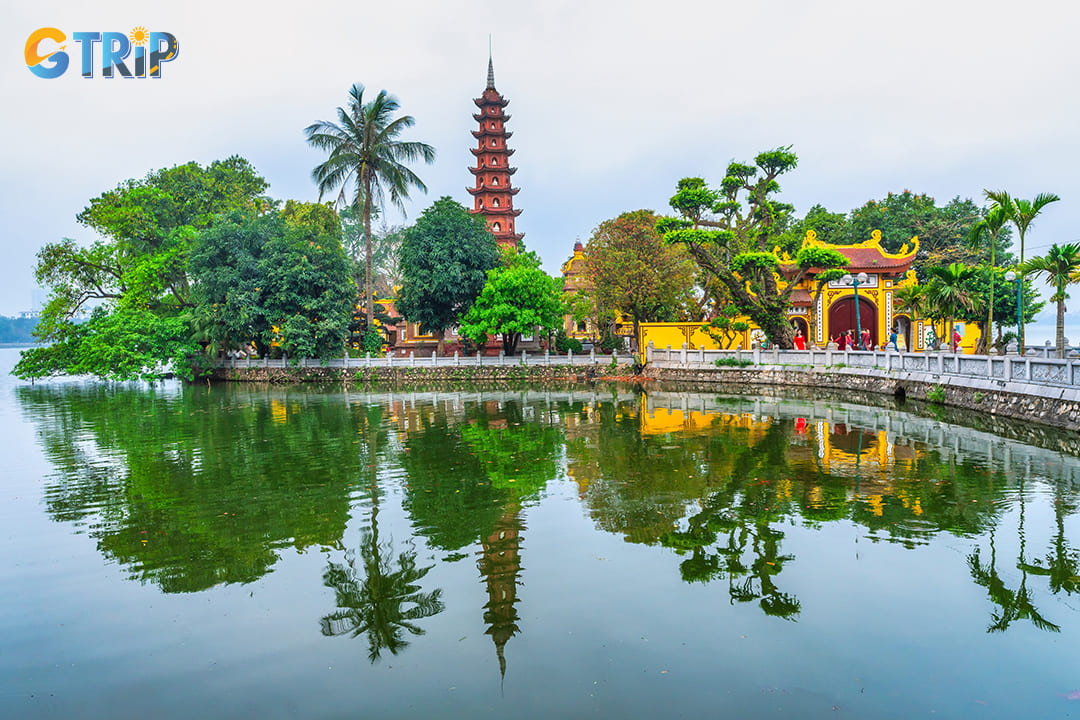
Tran Quoc Pagoda, Vietnam's oldest Buddhist temple, stands magnificently on a small peninsula extending into the eastern part of West Lake
6. Enjoy coffee in lakeside cafes and restaurants
West Lake has a wide range of cafes from traditional Vietnamese spots to stylish modern venues, all with scenic lake views. The best time to visit is between 4:00-6:00 PM, when the soft afternoon light casts a golden glow over the water. Many cafes also offer happy hour during this time, making it ideal for those on a budget. Remote workers will appreciate cafes with stable wifi and power outlets, especially around the eastern and southern shores. For a more authentic experience, the eastern side is also home to simple sidewalk cafes serving strong Vietnamese coffee from just 20,000 VND.
7. Play at West Lake's Water Park
West Lake Water Park is a popular summer escape in Hanoi, especially for families and younger travelers looking for fun beyond sightseeing. Set by the lake, it features six pools, exciting waterslides, wave machines, and kid-friendly play zones. Open from April to October, the park operates daily from 8:00 AM to 6:00 PM (until 8:00 PM on weekends). Admission ranges from 180,000-220,000 VND for adults and 130,000-160,000 VND for children, with family packages available. Rentals include lockers, towels, and swim gear. Weekday mornings are the best time to visit for fewer crowds. Bring sunscreen and consider wearing swim shirts, as shaded areas are limited. On-site food stands offer snacks, though prices are slightly higher than outside.
8. Try local food
West Lake has developed its own distinctive culinary identity, offering tourists a chance to sample dishes that originated in this historic area alongside other Vietnamese classics. West Lake culinary specialties:
- Banh tom Ho Tay (West Lake shrimp fritters): Crispy fritters made from shrimp and sweet potato, served with herbs and dipping sauce. A local classic.
- Lau cua dong (field crab hotpot): A hearty hotpot with fresh crab broth, beef, tofu, and vegetables, ideal for group meals.
- Banh ran man (savory fried dumplings): Golden dumplings filled with pork, mushrooms, and vermicelli, paired with sweet-sour sauce.
- Oc luoc (boiled snails): A street food favorite, served hot with lemongrass, ginger, and chili dipping sauce (70,000-120,000 VND per plate).
- Nem lui (grilled lemongrass pork skewers): Smoky, flavorful skewers often wrapped in rice paper with herbs and peanut sauce.
- Ga tan (herbal stewed chicken): Chicken slow-cooked with medicinal herbs, offering both flavor and wellness.
- Thit xien nuong (grilled pork skewers): Chargrilled, marinated pork served with pickles or chili sauce, perfect for a quick snack.
- Tao pho (silken tofu dessert): A sweet and silky tofu pudding, usually sold by mobile vendors near temples (15,000-20,000 VND).
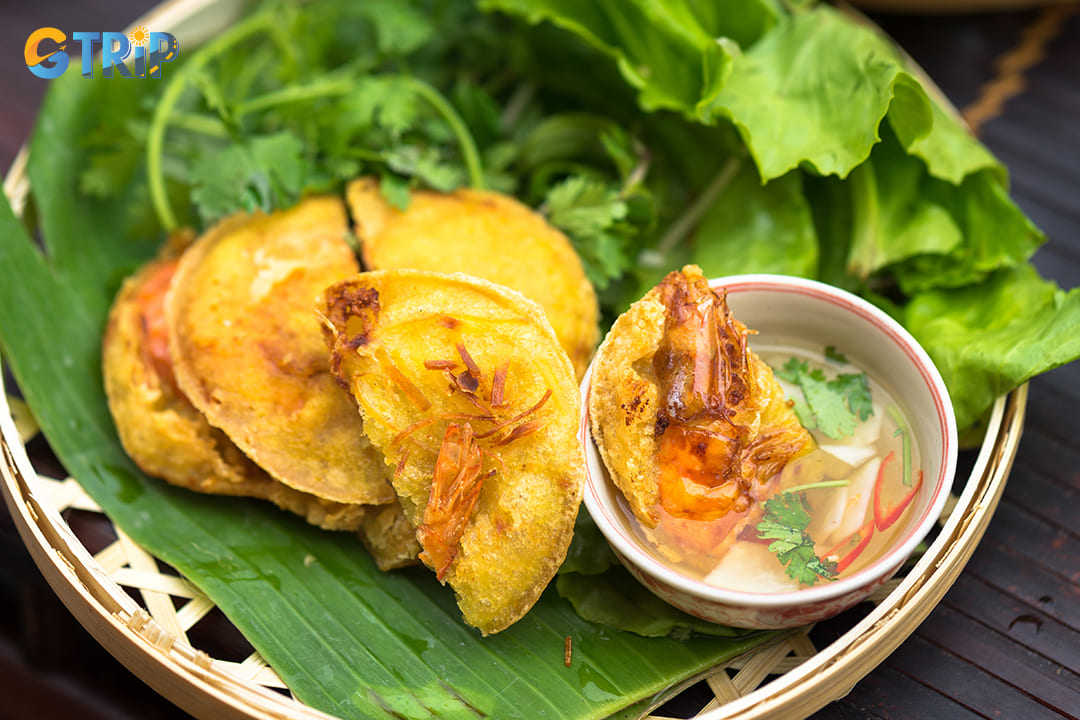
Banh tom Ho Tay (West Lake shrimp fritters) is the local food that you should try
Best time to visit West Lake
West Lake in Hanoi offers different experiences throughout the year, making timing an important consideration for tourists. The climate and seasonal changes dramatically affect the atmosphere, activities, and overall enjoyment of this iconic Hanoi destination. October to April marks the ideal visiting period for West Lake, thanks to cooler temperatures ranging from 15-25°C and significantly lower humidity. During these months, the pleasant weather creates perfect conditions for walking the 17-kilometer shoreline or enjoying outdoor cafes without the discomfort of summer heat.
Early mornings at West Lake offer a magical experience as the sun rises over the calm waters, creating stunning reflections that photographers dream about. Between 5:30-7:30 AM, you'll find locals practicing tai chi, jogging, or fishing, providing an authentic glimpse into daily Hanoi life. Late afternoons transform West Lake into a vibrant social hub as the day cools and the setting sun paints the sky with dramatic colors. Between 4:30-6:30 PM, the lakeside paths fill with couples strolling, friends gathering at cafes, and food vendors preparing evening delicacies.
Seasonal highlights at West Lake:
- October-November: Fall foliage adds rich colors to the landscape
- December-February: Misty mornings create ethereal views across the water
- March-April: Spring flowers bloom around the lake's gardens
- June-August: Lotus season transforms parts of the lake into pink and white carpets
The summer months (June through August) bring their own special appeal despite the heat and occasional downpours. This is when the lake's famous lotus flowers bloom spectacularly, creating picturesque scenes that have inspired Vietnamese poets for centuries. Weekday visits generally offer a more peaceful experience than weekends, when local families flock to the lake's recreational areas. If you're seeking tranquility, plan your visit for Tuesday through Thursday to avoid the weekend crowds.
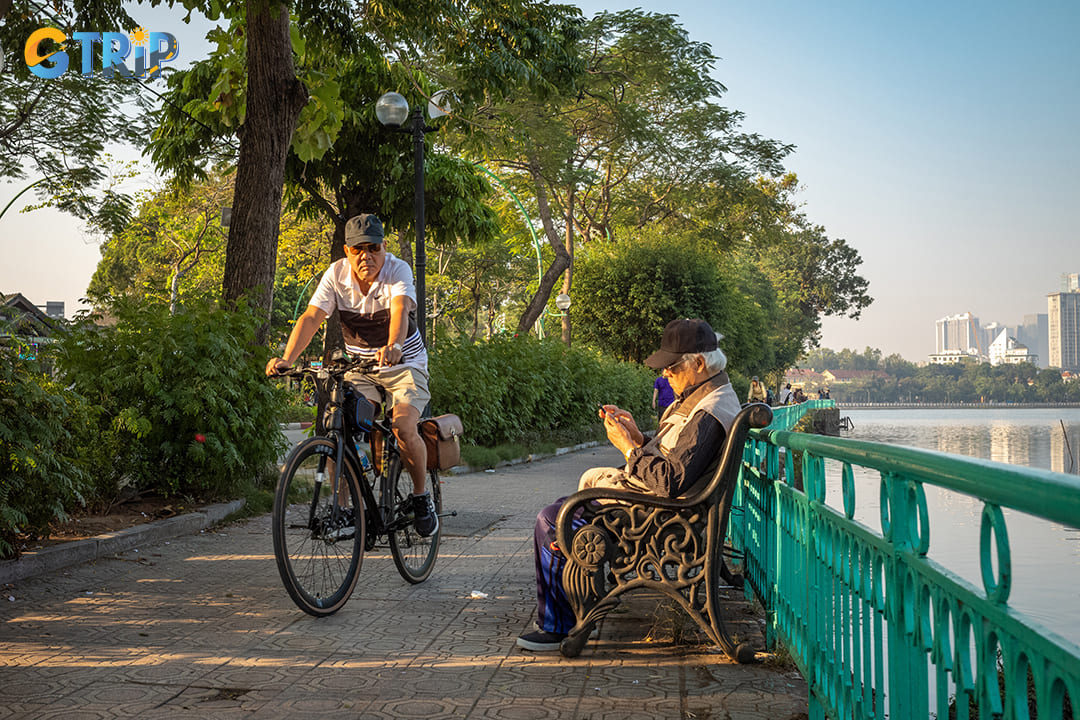
Early mornings at West Lake offer a magical experience as the sun rises over the calm waters
How to get to West Lake?
Accessing Hanoi's iconic West Lake is straightforward with multiple transportation options that suit different budgets and preferences. The expansive lake's convenient location makes it accessible from most parts of the city, with several reliable transportation methods available for both locals and tourists.
By taxi and ride-hailing apps
Getting to West Lake via taxi or ride-hailing services offers convenience with door-to-door service and air-conditioned comfort. This option works especially well for those unfamiliar with Hanoi's public transportation system or tourists with limited time.
Popular ride-hailing apps that operate in Hanoi include:
- Grab - The most widely used option with an English interface
- Be - A Vietnamese alternative with competitive pricing
- Xanh SM - Eco-friendly option with electric vehicles
A typical ride from Hanoi's Old Quarter to West Lake costs between 70,000 to 150,000 VND ($3-$6.50), depending on traffic conditions and exact pickup location. During rush hours (7:30-9:00 AM and 5:00-7:00 PM), expect longer travel times and potentially higher fares due to Hanoi's notorious traffic congestion.
For those staying in nearby districts like Ba Dinh or Tay Ho, taxi fares will be significantly lower, typically 40,000-60,000 VND ($1.70-$2.60). Most drivers don't speak English fluently, so it's advisable to have your destination written in Vietnamese or pinned on a map application.
By public buses
Hanoi's public bus system provides an economical way to reach West Lake, with multiple routes serving different areas around the lake. This option gives travelers a chance to experience local life while saving money on transportation.
| Bus route | Starting point | Ending point | Notable stops | Frequency |
|---|---|---|---|---|
| 32 | Long Bien | Nhon | Tran Quoc Pagoda, Quan Thanh | Every 10-15 minutes |
| 34 | Bac Co | Nam Thang Long | Lac Long Quan Street | Every 15-20 minutes |
| 47 | Thuy Khue | Kim Ma | West Lake Flower Garden | Every 20 minutes |
| 55 | Long Bien | Cat Linh | Thanh Nien Road | Every 15 minutes |
| 58 | Le Duc Tho | Nguyen Trai | Nghi Tam peninsula | Every 20-25 minutes |
Bus fares are extremely affordable, ranging from 7,000 to 10,000 VND (about $0.30-$0.43) per trip. Buses typically operate from 5:00 AM to 9:00 PM daily. For the best experience:
- Board buses at designated stops (look for blue signs with bus numbers)
- Have small bills ready for payment
- Track bus locations using the "Timbus" app (has English language option)
- Be prepared for crowded conditions during peak hours
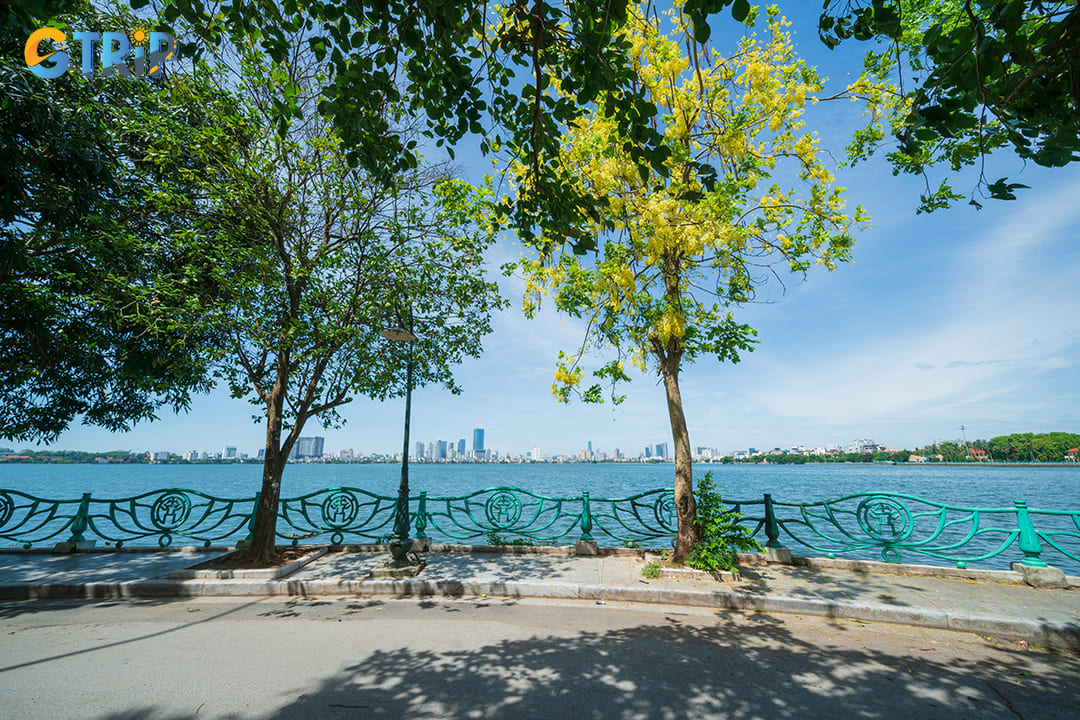
Accessing Hanoi's iconic West Lake is straightforward with multiple transportation options that suit different budgets and preferences
By motorbike or bicycle rentals
Renting a motorbike or bicycle gives tourists the flexibility to explore West Lake at their own pace, stopping whenever and wherever they please. This option is particularly popular among travelers who want to discover hidden spots around the 17km lake perimeter.
Motorbike rentals near West Lake typically cost:
- Daily rate: 120,000-200,000 VND ($5-$8.50)
- Weekly rate: 700,000-1,000,000 VND ($30-$43)
- Monthly rate: 2,500,000-3,500,000 VND ($107-$150)
Most rental shops require a passport or a cash deposit. For those uncomfortable driving themselves, "xe om" (motorbike taxis) are widely available, with trips around West Lake costing 20,000-40,000 VND ($0.85-$1.70).
Bicycle rentals offer a more eco-friendly alternative at lower prices:
- Daily rate: 50,000-100,000 VND ($2-$4.30)
- Weekly rate: 300,000-500,000 VND ($13-$21)
Several hotels and hostels in the area also offer free bicycle rentals to guests. The relatively flat terrain around West Lake makes cycling a pleasant experience, especially during early mornings or late afternoons when temperatures are cooler.
Walking from nearby districts
For tourists staying in areas close to West Lake, walking provides an immersive way to experience Hanoi's vibrant street life. The scenic journey from the Old Quarter to West Lake covers approximately 2 miles (3.2km).
The most picturesque walking routes include:
- Via Dien Bien Phu Street: Passes by the Hanoi Botanical Garden and Lenin Park
- Via Phan Dinh Phung Street: Features French colonial architecture and tree-lined boulevards
- Via Quan Thanh Street: Leads directly to the southern edge of West Lake
Allow 30-45 minutes for the walk from the Old Quarter, depending on your pace and how often you stop. While walking, remain cautious about crossing streets and use pedestrian crossings where available. Early morning (before 8 AM) or evening walks (after 5 PM) are recommended to avoid Hanoi's heat and humidity, especially during summer months.
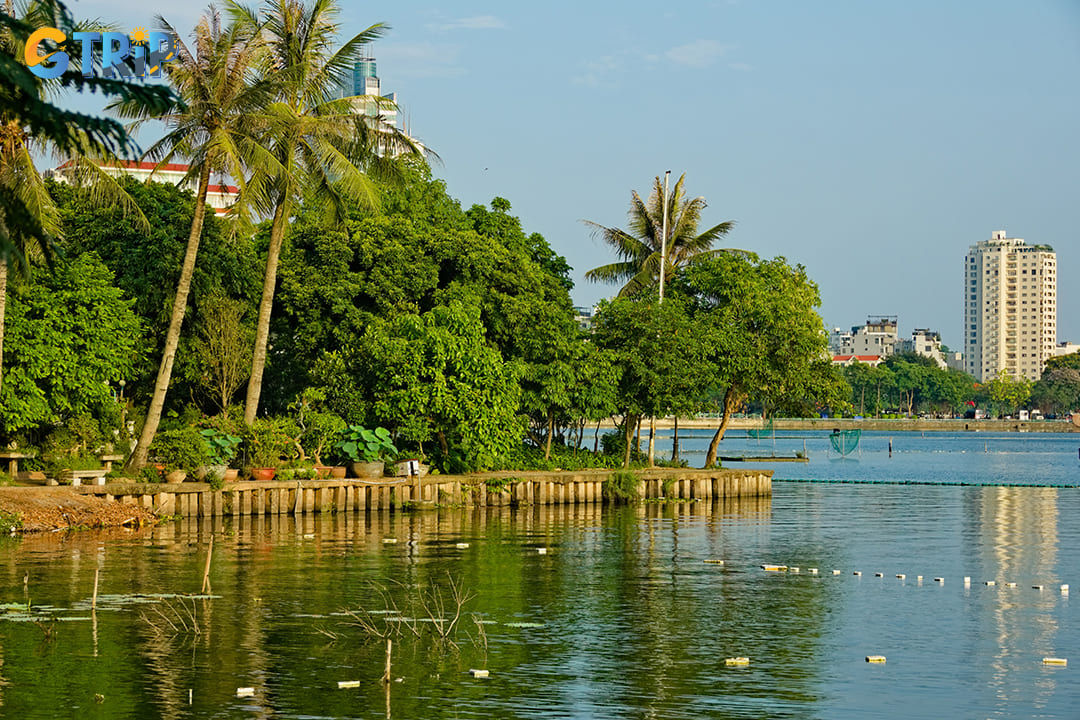
For tourists staying in areas close to West Lake, walking provides an immersive way to experience Hanoi's vibrant street life
Nearby attractions around West Lake in Hanoi
West Lake's surroundings offer a treasure trove of cultural landmarks and scenic spots that showcase Vietnam's rich heritage.
Tran Quoc Pagoda
Located on a small peninsula on the eastern shore of West Lake, Tran Quoc Pagoda stands as the oldest Buddhist temple in Hanoi with a history spanning over 1,500 years. This spiritual landmark features a striking 11-story red pagoda that rises gracefully against the backdrop of West Lake's shimmering waters.
The pagoda houses numerous precious artifacts, including the stone stele dating from 1639 that recounts the temple's rich history. You can admire intricate wood carvings, ancient Buddha statues, and beautiful Bodhi trees descended from the original tree under which Buddha achieved enlightenment.
For the best experience, consider visiting:
- Early morning (7-9 AM) to witness monks in prayer
- Sunset hours for spectacular photography opportunities
- During Buddhist festivals when the pagoda is adorned with colorful decorations
Visitor tips:
- Dress modestly with shoulders and knees covered
- Remove shoes before entering temple buildings
- Maintain respectful silence in prayer areas
- Photography is permitted in most areas but not during ceremonies
Tay Ho Temple
Tay Ho Temple (Phu Tay Ho) sits on the northeastern shore of West Lake and serves as one of the most important spiritual sites dedicated to Mother Goddesses worship in Vietnam. This vibrant temple complex honors the Tran Vu Goddess, attracting devotees who seek blessings for wealth, health, and fortune.
The temple features three main buildings adorned with red-tiled roofs, ornate decorations, and symbolic motifs that represent prosperity and good fortune. During full moon days and the first and fifteenth days of each lunar month, the temple transforms into a bustling hub of religious activity with incense offerings and traditional ceremonies.
Notable temple features include:
| Area | Description | Significance |
|---|---|---|
| Main hall | Houses the Mother Goddess altar | Central worship space |
| Golden fish pond | Small pond with ornamental fish | Symbolizes abundance |
| Incense house | Large bronze urns for offerings | A place for prayers |
| Viewing platform | Overlooks West Lake | Perfect for photographs |
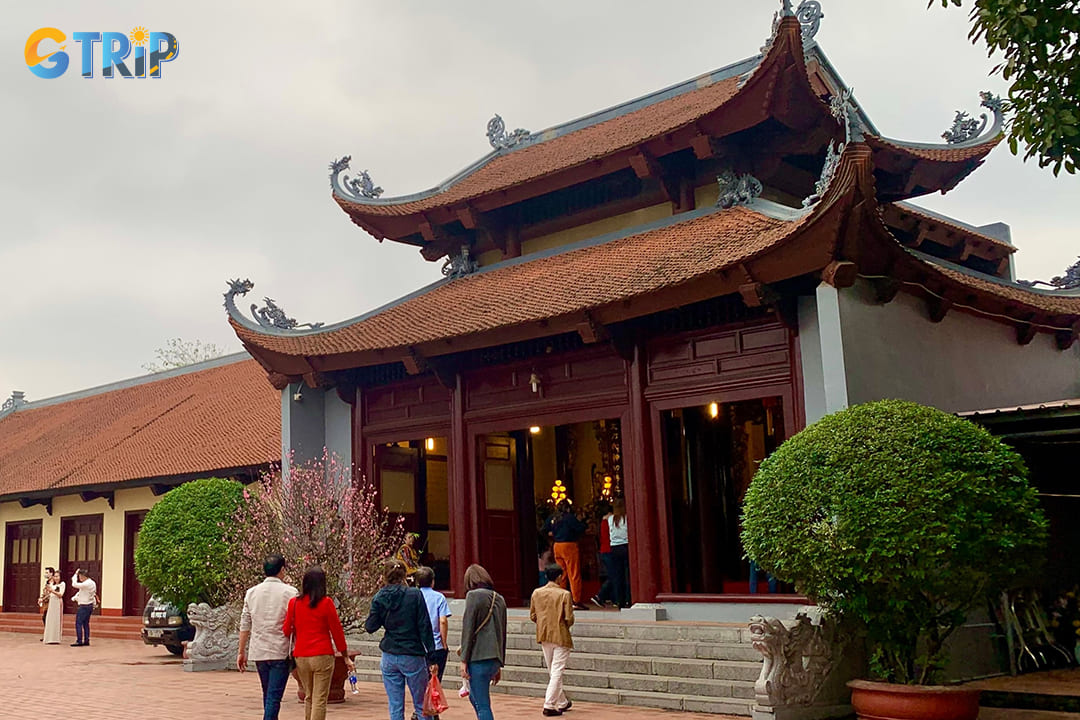
Tay Ho Temple sits on the northeastern shore of West Lake and serves as one of the most important spiritual sites dedicated to Mother Goddesses worship
Quan Thanh Temple
Dating back to the 11th century during the Ly Dynasty, Quan Thanh Temple stands as one of Hanoi's ancient Four Sacred Temples built to guard the city. The temple honors Tran Vu, the God of the North in Vietnamese Taoism, who is believed to protect against evil spirits.
The temple's most remarkable feature is the imposing 4-ton, 13-foot bronze statue of Tran Vu created in 1677 during the Le Dynasty. The masterful craftsmanship showcases ancient bronze casting techniques rarely seen elsewhere. The temple grounds also contain numerous stone steles documenting the site's long history and renovations throughout different dynasties.
What makes Quan Thanh Temple special?
- Distinctive black-lacquered wooden doors with mother-of-pearl inlay
- Ancient bronze ritual objects and ceremonial items
- Traditional Vietnamese architectural elements with Chinese influences
- The peaceful courtyard is filled with bonsai trees and flowering plants
Truc Bach Lake
Separated from West Lake by Thanh Nien Road, Truc Bach Lake offers a more intimate atmosphere and is steeped in both historical significance and local culture. The lake was formed when a section of West Lake was cordoned off during the Ly Dynasty to create a silk-weaving village.
Today, Truc Bach has transformed into a vibrant area known for its specialty foods and relaxed ambiance. The tree-lined promenade surrounding the lake provides perfect walking paths with views of traditional houses and modern cafes that reflect Hanoi's evolving character.
Local experiences around Truc Bach Lake include:
- Sampling Pho Cuon (rice noodle rolls) at specialized restaurants
- Enjoying egg coffee at lakeside cafes
- Watching locals practice morning tai chi and exercise
- Photographing the iconic Tran Quoc Bridge connecting to West Lake
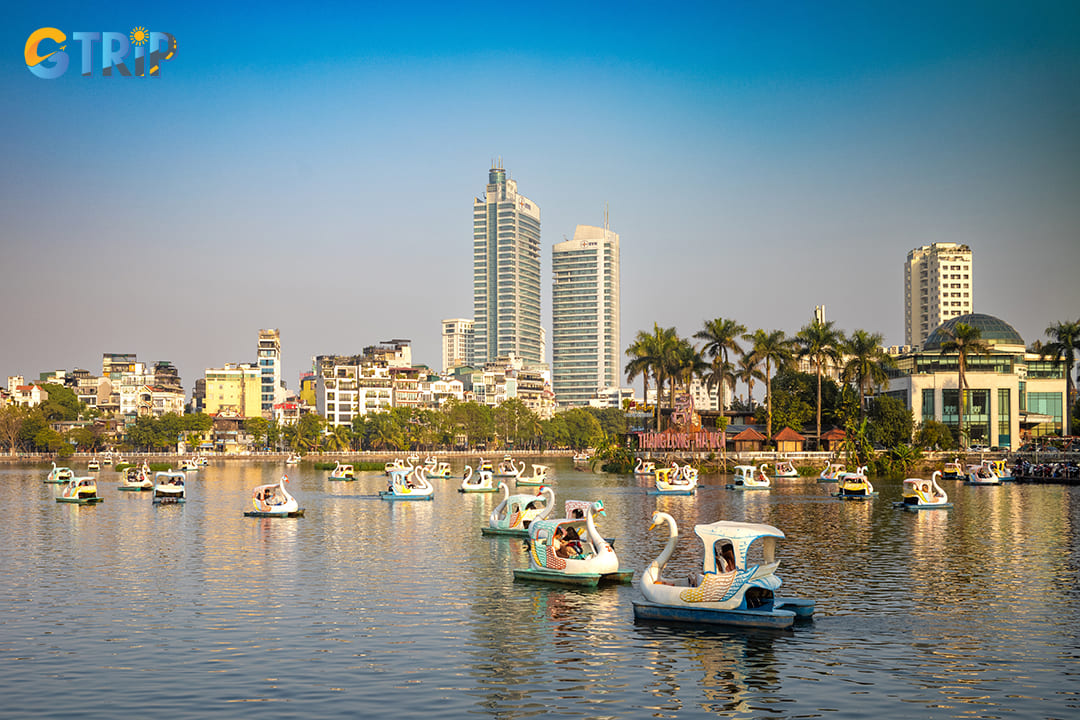
Truc Bach Lake offers a more intimate atmosphere and is steeped in both historical significance and local culture
Ho Chi Minh Mausoleum
Located approximately 2 kilometers from West Lake, the Ho Chi Minh Mausoleum stands as Vietnam's most revered historical monument. It preserves the embalmed body of revolutionary leader Ho Chi Minh. The imposing granite structure blends Vietnamese architectural elements with Soviet influences in its monumental design.
The mausoleum sits within Ba Dinh Square, where Ho Chi Minh read the Declaration of Independence in 1945. You must observe strict protocols, including dress codes and behavior, as the site holds profound national significance for Vietnamese people.
Visiting information:
| Detail | Information |
|---|---|
| Opening hours | 7:30 AM - 10:30 AM (closed Mondays and Fridays) |
| Dress code | Modest clothing covering shoulders and knees |
| Photography | Prohibited inside the mausoleum |
| Waiting time | 45-90 minutes during peak season |
| Nearby sites | Presidential Palace, Ho Chi Minh Museum, One Pillar Pagoda |
Safety tips for visitors
West Lake offers peaceful scenery and cultural charm, but staying alert helps ensure a smooth experience. Here are key safety tips:
- Watch the traffic: Roads around the lake are often congested, especially during rush hours. Motorbikes may use sidewalks, so walk with caution.
- Stay cool and hydrated: From May to September, Hanoi can be extremely hot and humid. Wear sun protection and drink plenty of water.
- Keep belongings secure: Pickpocketing can happen in crowded spots like Tran Quoc Pagoda or the flower market. Carry valuables discreetly.
- Don’t swim in the lake: The water is not safe for swimming due to pollution.
- Be smart with street food: Choose clean stalls with busy crowds and freshly cooked food.
- Cross streets carefully: Use marked crossings when possible, walk steadily, and avoid sudden stops in traffic.
Locals are generally helpful, especially near tourist-friendly cafes and shops where English is often spoken.
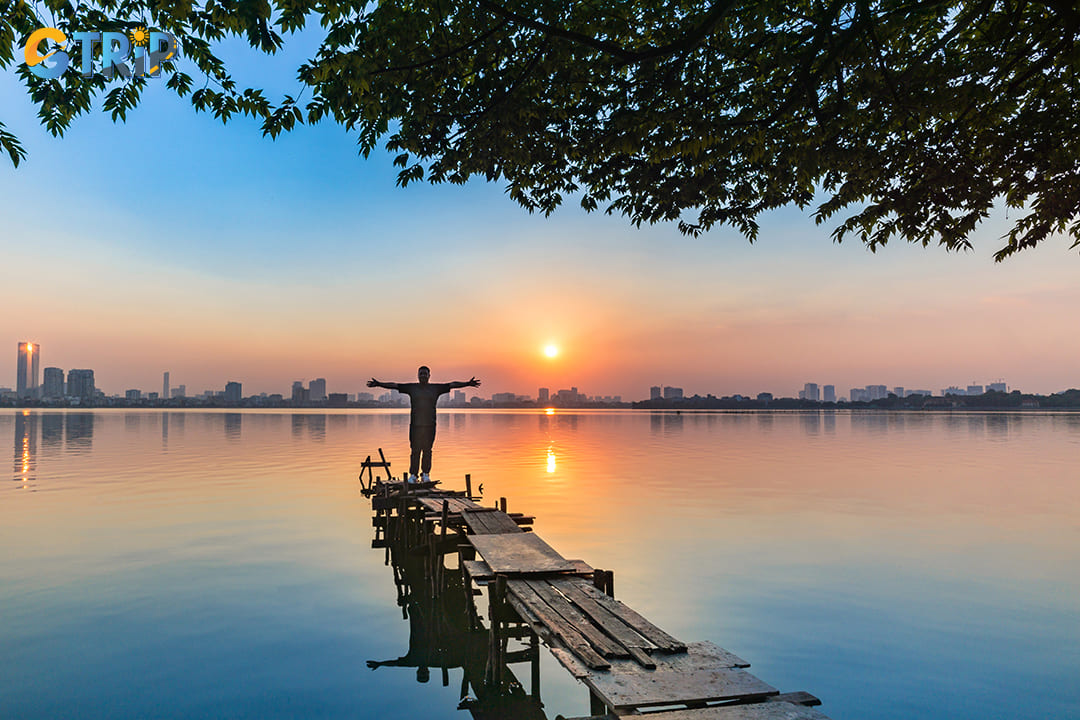
West Lake offers peaceful scenery and cultural charm, but staying alert helps ensure a smooth experience
Exploring the West Lake in Hanoi offers more than just picturesque views. It’s a journey through cultural richness and personal reflection. Visiting such a distinct destination changes how we perceive beauty and tranquility in our fast-paced world. With every step around this expansive body of water, you’re creating memories that linger long after you’ve returned home. Perhaps there's more to uncover about Hanoi's treasures or other similar gems waiting on your travel list. You can consider booking Hanoi tours with GTrip - Vietnam Travel Agency as your trusted companion on future adventures.

